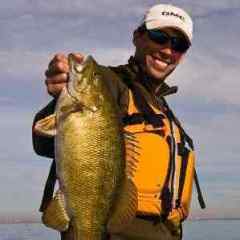Go to a local tropical fish store, and have them save a bag (two bags is better since they are spiny little devils) and a shipping cooler. You want a "full box" size, not a half. You only need as much water as it takes to cover their backs - about 4" - the rest is a air. You quickly grab the top of the box bag, capturing as much air as possible, and twist the bag. Tie a slip knot around the base of the twisted section with a rubber band, and fold the twisted section in half. Then make several wraps with the rubber band to lock in the air. You might want to add a couple more rubber bands as insurance. Close the box, and keep it somewhere dark and cool. DO NOT OPEN IT UP AND PEEK!!! When you get to class, open the box, and immediately net the fish, placing them in the destination tank.
This routine is somewhat different than the typical acclimation process when you buy fish at the pet store, but works. I've shipped fish air freight all over the country with less than 1% mortality this way. We've also done this to transport pygmy sunfish from the NJ Pine Barrens to our facility in Rochester, NY. Yes, we had special permits for this.
Here is the science behind it. There is plenty of oxygen in air trapped in the bag to support two small fish for more than 24 hours. As the fish respirate they create CO2 and Ammonia. You probably have learned that ammonia is toxic to the fish. Here is the catch: as the CO2 levels increase, the pH level decreases. As pH decreases, so does the ill effects of ammonia. Pretty neat?
Now, when you open the bag, the water will immediately be exposed to fresh air, and CO2 will leave the water, and O2 will go in, raising the pH, and increasing the toxicity of the ammonia. This is why you forgo any temperature/water chemistry acclimation, and get them into the tank as quick as possible. Its easier to deal with the stress of a sudden change into clean water, than a sudden change to toxic water, with a gradual change to healthy water again.
One last warning. I'm not up on my Centrarchid behaviors when in confinement, and know next to nothing about warmouth, other than they look like our rockies. If they are aggressive to each other, you will want to box them up seperately, but add them to the tank together.
If you have any other questions, or need explanation, PM me with your number, and I'll call you and describe the process over the phone.








